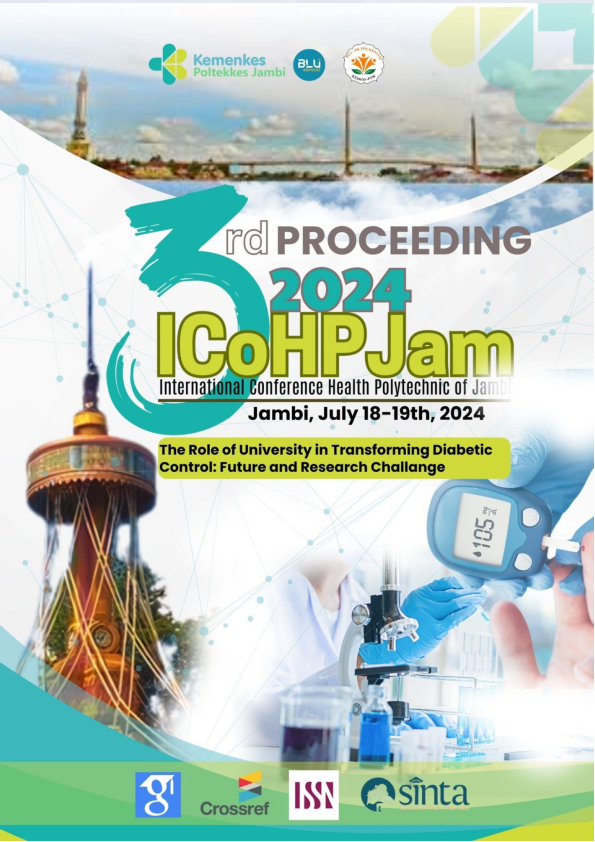Study of Albumin-Globulin Ration in The Saliva and Serum of Diabetes Mellitus Patients in Jambi City
Abstract
Background: DM is a metabolic disorder that is genetically and clinically heterogeneous with manifestations of loss of carbohydrate tolerance. Resistance in type 2 DM affects carbohydrate, lipid and protein metabolism. Protein is a macronutrient that functions as the main source of energy reserves, cell and tissue building substances, regulating metabolic processes that play a role in the body's defense system. Total protein consists of Albumin, globulin and the ratio of Albumin-Globulin (RAG). RAG examination has the same function as the total protein assay in addition to that this examination is also to determine the typical factors to classify the level of systemic inflammation, in addition to this parameter is also simpler and less expensive.
Method: this study use analytical research with a case control and sampling used convenience sampling technique, the instruments is spectrophotometer, and the data analysis used mann-whitney test and kruskal wallis test.
Result: the result showed the average of AGR between saliva and serum control group was significant (0,049), but for the DM and DM-TB group there’s no significant for DM (0,589) and DM-TB (0,176). The comparison among all groups for AGR saliva was no significant (0,183), also same for the AGR serum showed there no significant (0,283).
Conclusion: Based the result of the study that shows the differences between saliva and serum among the 3 groups but no significance. In saliva the average of DM group was the higher, but in the serum the average of DM-TB group was the higher.



